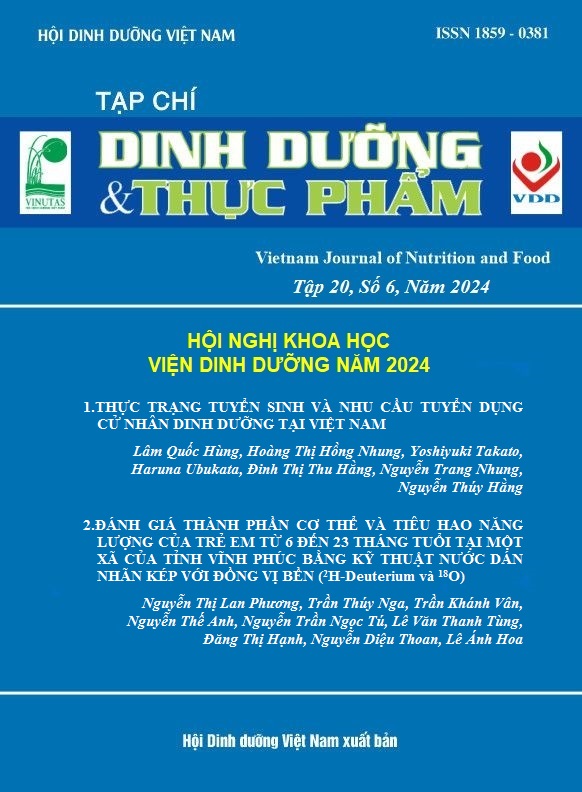ASSOCIATION BETWEEN LEVEL OF MICRONUTRIENTS AND BONE MINERAL DENSITY IN WOMEN EXAMINE IN NATIONAL INSTITUE OF NUTRITION 2021
Main Article Content
Abstract
Aims: To determine the relationship between the concentration of micronutrients and bone mineral density of women examined at the National Institute of Nutrition.
Methods: a cross-sectional study including 306 women was examined at the Department of Adult Nutrition Counseling in 2021. Subjects were assessed for the concentration of micronutrients including calcium-ion, vitamin D3, iron, zinc, and bone mineral density (BMD) by Dual-energy x-ray Absorption (DXA) method at the lumbar spine, hip, and femoral neck.
Results: Age was positively associated with BMD in the group aged 20-49 years and negatively associated with BMD in the group aged ³50 years (all p<0,001). BMI was positively associated with BMD in all sites in both age group assessments (p<0,01). In the group aged 20-49 years, the levels of calcium-ion and Vitamin D3 were positively associated with BMD at the lumbar spine, hip, and femoral neck (all p<0,05). Additionally, the level of Zinc is inversely associated with BMD in the spine (p<0,05). In the group aged ³50 years, the levels of vitamin D3 and zinc were positively associated with BMD at the femoral neck and hip (all p<0,05). The level of calcium-ion was positively associated with BMD in the spine(p<0.05). Furthermore, there was a positive association between BMD and the level of Iron at the hip (p=0,004).
Conclusion: The association between micronutrient concentrations and BMD in women by age group was different. Specific guidelines on micronutrient supplemental to improve bone mineral density in women according to age are needed.
Keywords
Micronutrients, bone mineral density, women, National Institute of Nutrition


